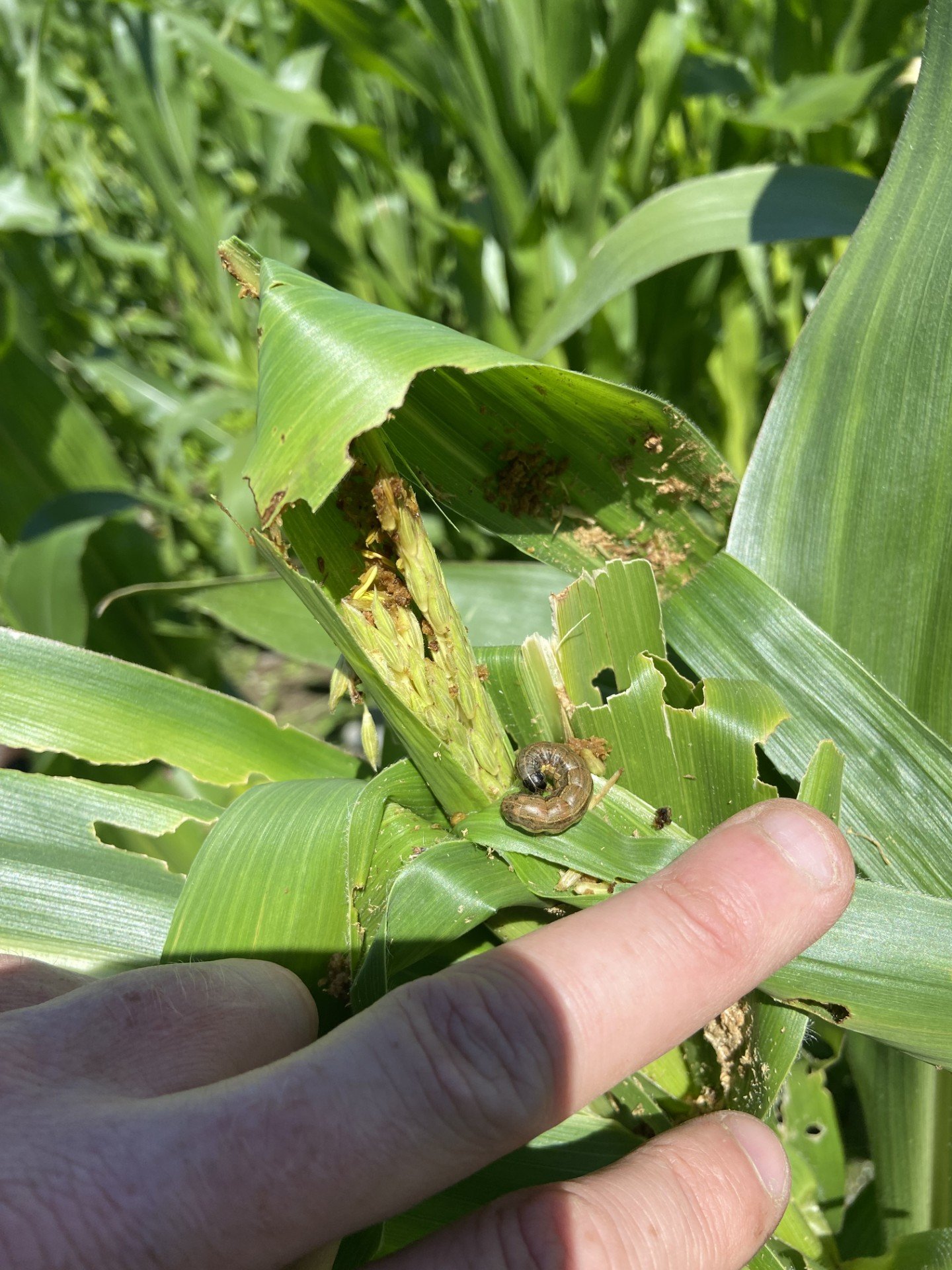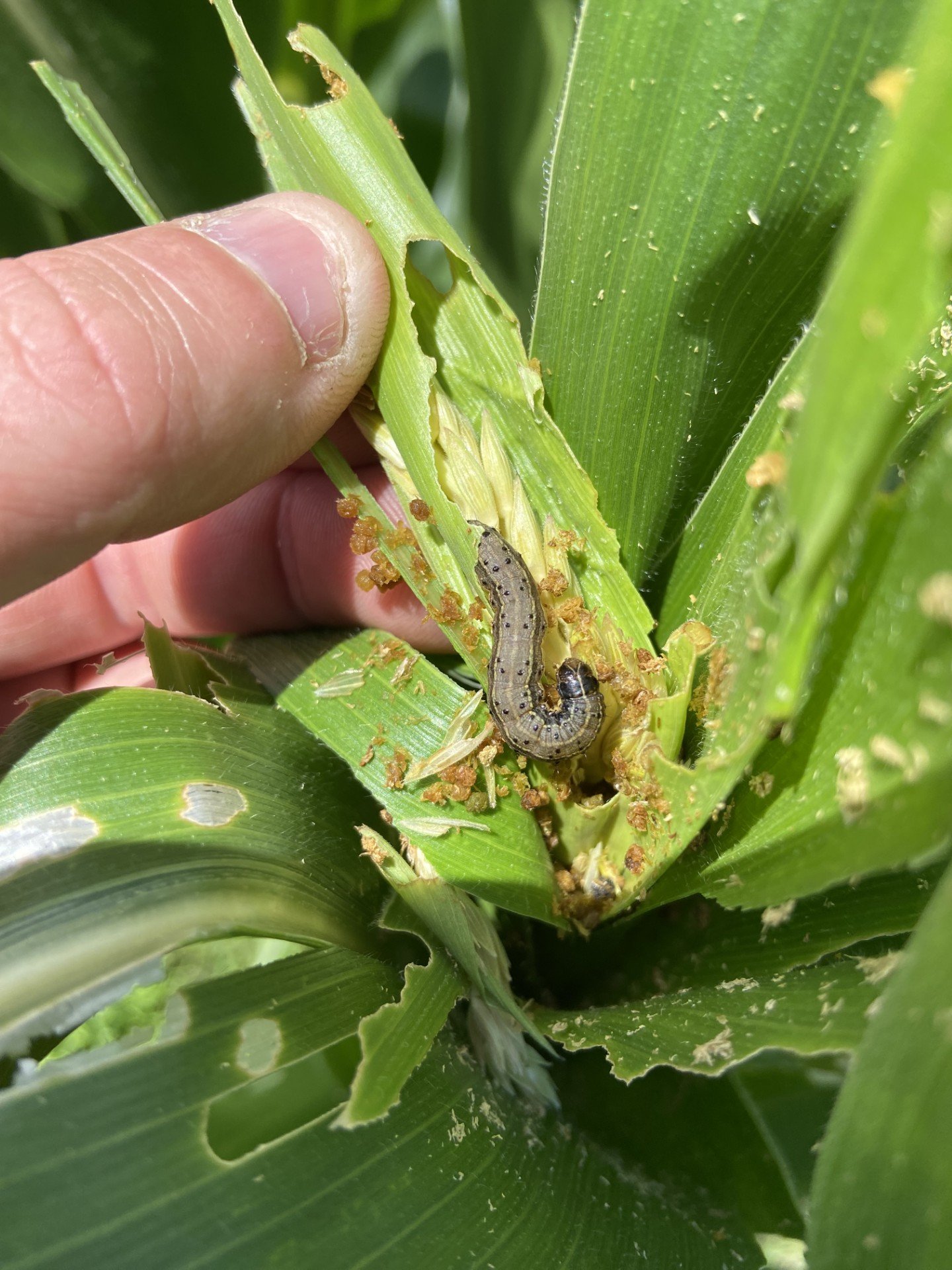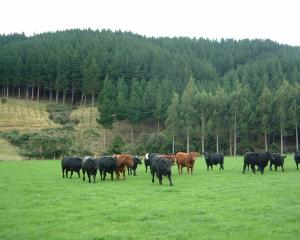
Populations are also two to three weeks more advanced in other areas of the country where the invasive pest, which can cause havoc on maize and sweet corn crops, has become established.
The arable industry is containing the spread of the pest — believed to have landed from Australia in 2022 — after MPI and industry partners ruled out its eradication.
Several populations have been identified on the West Coast and adult moths have been observed in the Tasman region, with second-generation larvae expected soon in maize crops.
The earlier finds than last year indicate a warmer late winter and spring conditions have accelerated its life cycle.
A sweet corn crop in North Canterbury which had small populations in previous seasons has yet to show signs of infestation this season. So far, traps around the area have yet to reveal further findings in nearby maize and sweet corn crops.
Foundation for Arable Research (FAR) biosecurity officer Ash Mills said there were four confirmed farms with the pest and the likelihood was there were "plenty" more on the West Coast.
A visit earlier this month showed a few populations of quite advanced larvae between Hokitika and Hari Hari, he said
"It’s been found in those areas in previous seasons, but not at this advanced stage, so they are later instar and likely to be pupating and emerging as moths [by the end of the month] depending on the weather.
"Again, all across the Tasman region, most paddocks of maize have a small population of fall armyworm in them. The likelihood up there is that it might not be too damaging just because it’s a little bit cooler than Northland. Each generation just takes that little bit longer to go through that complete life cycle."
He said new smart traps from Canada were being trialled, including at a sweet corn crop near Richmond for remote monitoring. Some moths had been caught by the camera trap in Richmond, which indicated there had been a moth flight, with agronomists notified once this was confirmed.
Mr Mills said this was a key time to monitor traps for larvae from the moth flight, which would signal the second generation in the Tasman area, and for growers to scout crops.
"It’s when those larvae are at that small size that they are really prone to chemical application, if that is indeed something which needs to be done based on the economic thresholds we’ve come up with."
The first find of fall armyworm were confirmed in Richmond in a sweet corn crop in mid December.
They have been found in maize crops towards Motueka and Takaka, he said.
"Although it has been pretty cool across the country over two weeks it was quite warm and mild over winter and most of the country had a good spring. That just means the larvae can kick into gear and get going a little bit earlier, and the warmer it is the quicker these larvae can go through their life cycle and it just speeds up the generation."
He said there was a possibility their development might slow if the cooler weather continued, and populations could then match previous seasons.
This was likely to be localised, as the fall armyworm turned over generations in warm microclimates.

Identifying crops in the short window while they lay eggs and at the early larvae stage can help them assess infestations and damage, and consider control options if needed.
"Populations are generally well below the economic thresholds we have identified so spraying might not be required at the moment, but it is really key to just monitoring these populations," Mr Mills said.
"There is a window of opportunity when the larvae are really small and newly hatched out to put product in the folds of the leaves and down into the whorls of the plant because they are more susceptible to chemical."
He said Sparta was the only labelled chemical available for maize and sweetcorn.
Some parasitism was being seen by natural predators of the fall armyworm, he said.
Natural controls such as the tiny wasp Cotesia ruficrus, spiders, and other predators help manage their populations.
Growers are also being recommended to refrain from over-using chemicals as they can disrupt the beneficial insects.
"Unless the populations of fall armyworm are quite large, a little bit of a hands off approach can actually be quite beneficial in the long run for protecting these natural controls."
In previous seasons the pest has survived insecticides not recommended for its control.
Mr Mills said fall armyworm had been found as expected in Northland in November — which was earlier than previous seasons — and they were more advanced.
A moth flight which had begun this month was being followed by a second generation of larvae from the eggs the moths had laid.
More larvae were being found in silage crops in the Far North, which was testing the economic threshold of about 20% plant damage for chemical spraying. Some paddocks had exceeded the 20% threshold, he said.
Populations were also being found around Auckland, Waikato and likely in Bay of Plenty and Gisborne.
A Sustainable Food and Fibre Futures project continues to play a key role in improving the pest’s surveillance and management.
Mr Mills said while numbers were still low, the insect pest had the potential to be quite devastating.
"If we have a look at other places around the world they can completely wipe out crops. They absolutely have the ability to defoliate crops and do severe damage to sweet corn cobs in that fresh market — and also maize grain growers, they can see a reduction in yield from larvae or caterpillars damaging the kernels in the cobs.
"So there is definitely a severe risk this pest can cause. We haven’t really seen that yet in New Zealand just because we don’t go through those life cycles as quickly as warmer climates like Australia or the Americas."
















